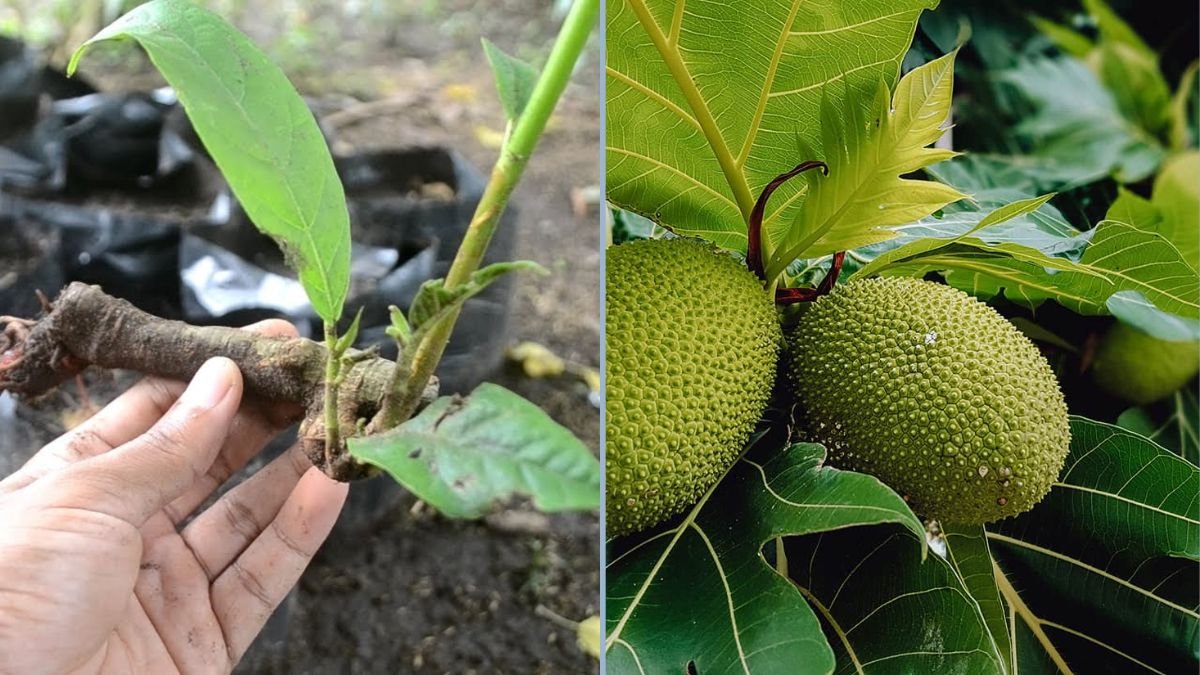Breadfruit (Artocarpus altilis) is a tropical tree renowned for its starchy, nutritious fruit and its versatility as a food source. With origins in the South Pacific, breadfruit has become an important staple in tropical and subtropical regions due to its high yield and nutrient-rich content. Beyond its culinary uses, breadfruit trees are valuable for their ecological benefits, shade provision, and ornamental appeal.
Whether you are a backyard gardener or an aspiring farmer, growing breadfruit trees can be both rewarding and sustainable. This comprehensive guide will take you step-by-step through the process of selecting, planting, caring for, and harvesting breadfruit trees.
Why Grow Breadfruit Trees?
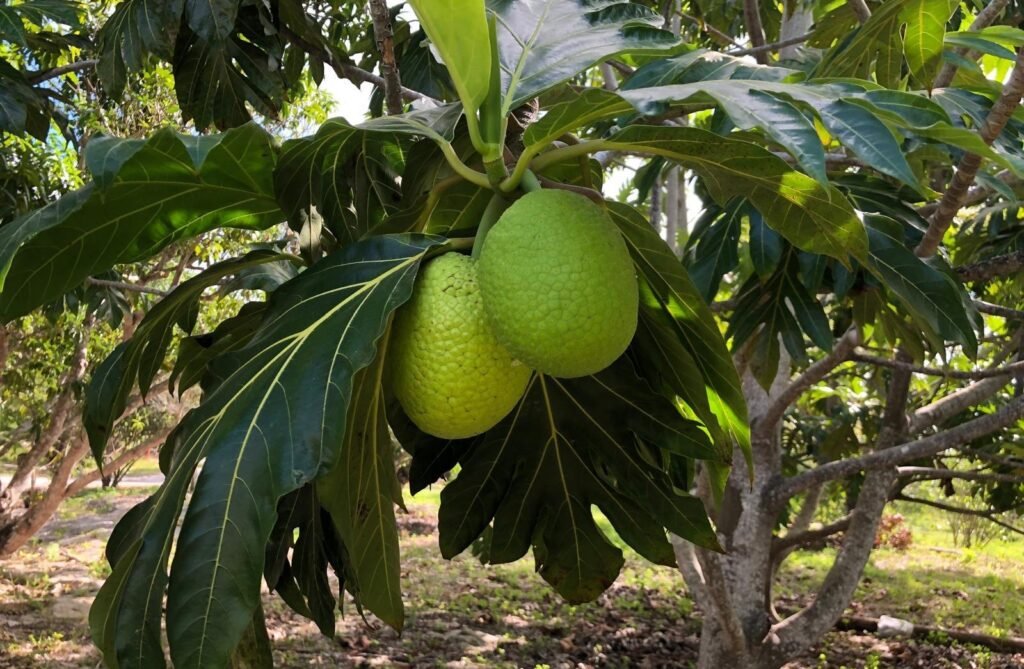
Breadfruit trees offer numerous benefits that make them ideal for home gardens and commercial farming:
- High-yielding: Mature trees can produce hundreds of fruits per year.
- Nutritional value: Breadfruit is rich in carbohydrates, fiber, vitamins, and minerals.
- Low-maintenance: Once established, trees are hardy and drought-tolerant.
- Culinary versatility: Fruits can be roasted, baked, boiled, or fried, and even processed into flour.
- Environmental benefits: Breadfruit trees improve soil quality, prevent erosion, and provide shade and shelter for wildlife.
Growing breadfruit trees not only supplies food but also contributes to sustainable farming and self-sufficiency.
Step 1: Selecting Breadfruit Varieties
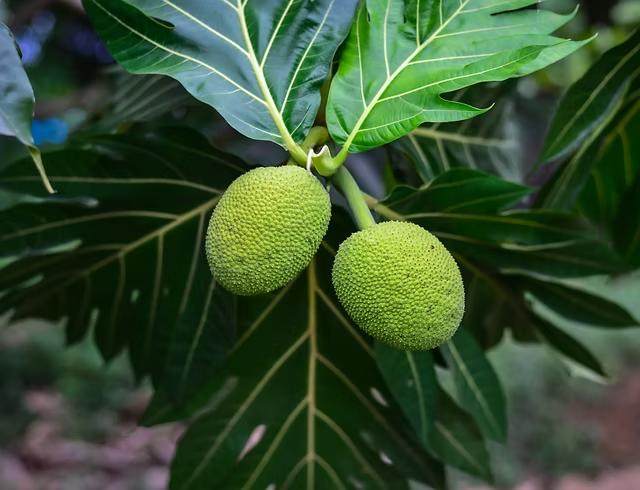
Choosing the right variety is crucial for successful cultivation:
- Seedless (vegetative) varieties: Most commercial breadfruit trees are propagated from cuttings, grafts, or root suckers. Seedless varieties produce large, uniform fruits but require vegetative propagation.
- Seeded varieties: Rare in cultivation, but useful for breeding purposes. Seeded breadfruit is less commonly grown for direct fruit production.
Factors to consider when selecting a variety include fruit size, yield, climate tolerance, and availability of planting material.
Step 2: Preparing Planting Material
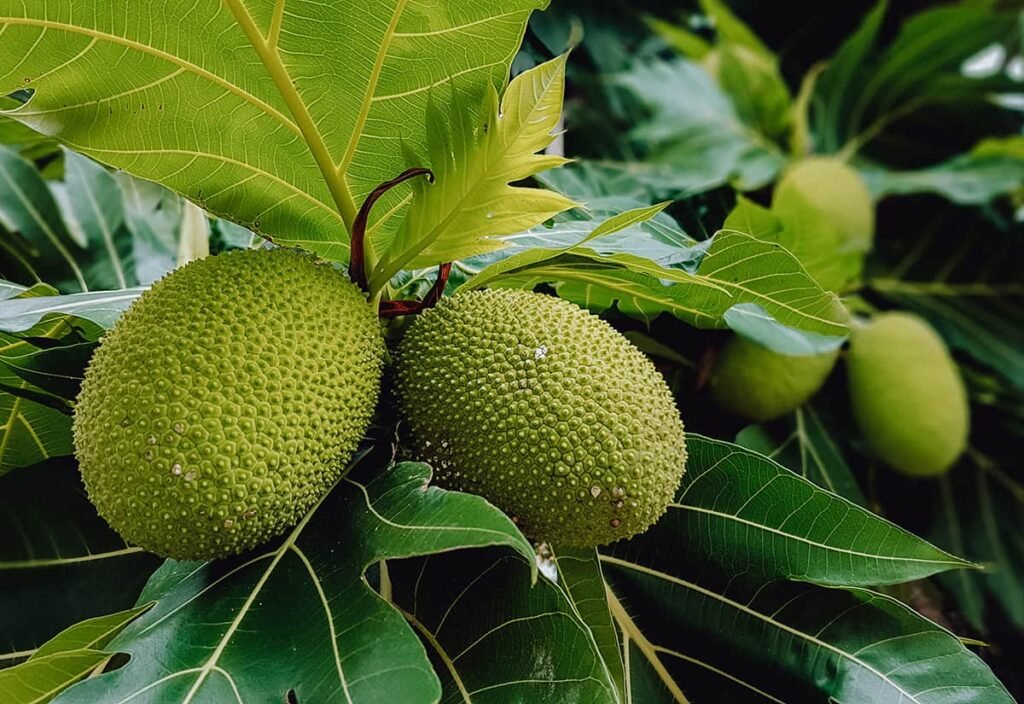
Breadfruit trees are commonly propagated using vegetative methods because seedless varieties do not produce viable seeds. The main propagation methods include:
1. Root Suckers
- Identify healthy, vigorous root suckers from mature trees.
- Carefully dig up the sucker, preserving some roots.
- Plant in a well-draining pot or directly in the ground.
2. Stem Cuttings
- Cut healthy branches approximately 30–50 cm long.
- Treat cut ends with rooting hormone to encourage root formation.
- Place cuttings in a shaded nursery area with moist, well-draining soil.
3. Grafting
- Grafting ensures the offspring tree inherits desirable fruit traits.
- Select a healthy scion from a high-yielding tree and graft it onto a compatible rootstock.
Using quality planting material increases survival rates and ensures healthy, productive trees.
Step 3: Choosing the Right Planting Site
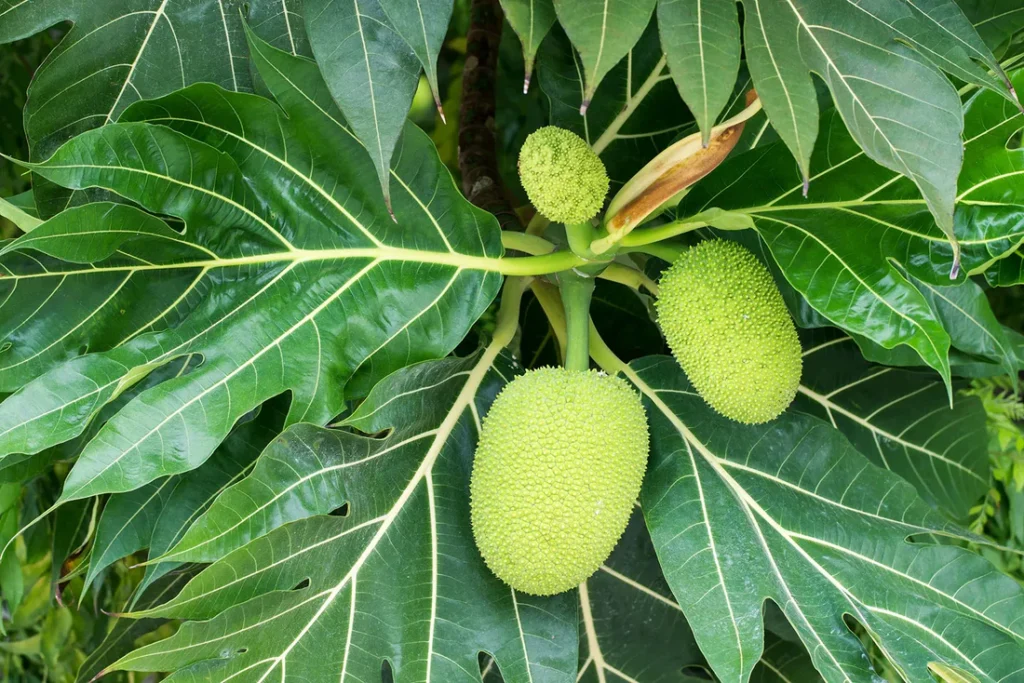
Breadfruit trees thrive in tropical and subtropical climates. Selecting an appropriate site is key:
- Climate: Warm temperatures between 21–32°C (70–90°F) are ideal. Breadfruit can tolerate occasional dry periods but prefers consistent rainfall or irrigation.
- Soil: Well-draining loamy soil rich in organic matter is optimal. Avoid waterlogged areas, which can cause root rot.
- Sunlight: Full sun exposure ensures healthy growth and high fruit yields.
- Spacing: Plant trees 8–12 meters apart to allow adequate airflow, sunlight, and room for mature growth.
A well-chosen site promotes vigorous growth, disease resistance, and high productivity.
Step 4: Planting Breadfruit Trees
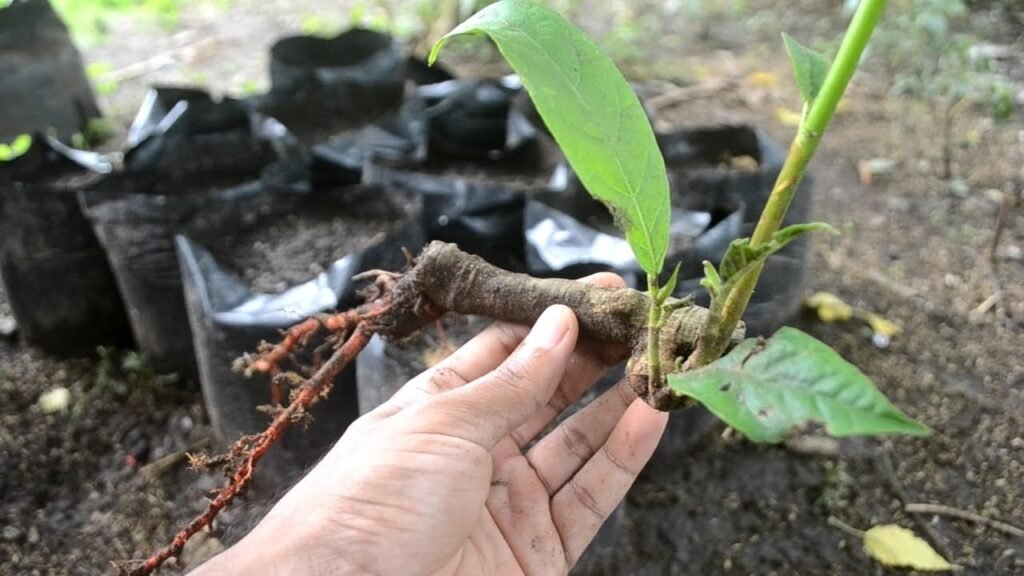
Once planting material and site are prepared, planting should be done carefully:
- Digging the hole: Prepare a hole twice as wide and as deep as the root ball or cutting.
- Amending the soil: Mix the excavated soil with compost or well-rotted manure to improve fertility.
- Planting: Place the root sucker, cutting, or grafted seedling in the hole, ensuring roots are spread evenly.
- Backfilling: Fill the hole with soil and gently firm it to remove air pockets.
- Watering: Water thoroughly after planting to help roots establish.
- Mulching: Apply organic mulch around the base to conserve moisture and suppress weeds.
Proper planting techniques ensure strong establishment and faster growth.
Step 5: Caring for Breadfruit Trees
Breadfruit trees require minimal maintenance, but proper care during the first few years ensures optimal growth and fruit production:
Watering
- Young trees need consistent moisture to establish roots.
- Mature trees are relatively drought-tolerant but produce better yields with regular watering.
- Avoid waterlogging, which can lead to root diseases.
Fertilization
- Apply a balanced fertilizer (NPK 10:10:10) 3–4 times a year.
- Organic compost or manure improves soil fertility and promotes healthy growth.
Pruning
- Remove dead, damaged, or crossing branches to maintain tree structure.
- Prune lightly after fruiting to encourage new growth and enhance airflow.
Pest and Disease Management
- Common pests include fruit flies, mealybugs, and aphids.
- Diseases such as root rot and leaf spot can occur in poorly drained soils.
- Use organic or chemical controls as necessary, and ensure proper spacing and sanitation.
Step 6: Flowering and Fruiting
Breadfruit trees produce flowers that develop into fruits:
- Flowering: Trees begin flowering 3–5 years after planting. Flowers are small and inconspicuous.
- Pollination: Breadfruit trees are mainly pollinated by wind and insects. Seedless varieties do not require cross-pollination for fruit set.
- Fruit development: Fruits take 4–6 months to mature, depending on climate and variety.
- Fruit size: Mature breadfruits can weigh between 1–5 kg (2–11 lbs).
Proper care during flowering ensures high fruit set and yields.
Step 7: Harvesting Breadfruit
Harvesting at the right time is essential for quality and taste:
- Maturity indicators: Fruits are typically harvested when they are full-sized, firm, and slightly yellow or green depending on the variety.
- Method: Gently twist or cut the fruit from the tree to avoid damage.
- Post-harvest handling: Store fruits in a cool, dry area. Breadfruit can be consumed fresh, boiled, roasted, baked, or processed into flour or chips.
Timely harvesting ensures optimal flavor, texture, and nutritional value.
Tips for Successful Breadfruit Farming
- Use high-quality planting material: Healthy cuttings or root suckers increase survival and yield.
- Choose the right site: Ensure good sunlight, well-draining soil, and adequate spacing.
- Provide consistent care: Watering, fertilization, and pruning promote healthy growth.
- Monitor for pests and diseases: Early detection and treatment prevent losses.
- Be patient: Breadfruit trees begin producing fruit 3–5 years after planting but can yield for decades.
- Consider companion planting: Crops such as legumes can enrich soil fertility and improve tree health.
Conclusion
Breadfruit farming is an excellent way to grow a nutritious, high-yielding, and sustainable food source. By selecting quality planting material, choosing the right site, and providing consistent care, you can cultivate healthy breadfruit trees that will provide bountiful harvests for years to come.
Whether for personal consumption or commercial farming, breadfruit trees offer numerous benefits, including food security, environmental sustainability, and economic potential. With proper planning and attention, growing breadfruit trees can be a rewarding experience that combines gardening, nutrition, and long-term sustainability.
Start your breadfruit farming journey today and enjoy the beauty, shade, and delicious fruits that these versatile trees have to offer.
